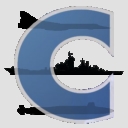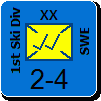kaleun
Posts: 5145
Joined: 5/29/2002
From: Colorado
Status: offline

|
August 30 1943
It is 0629 at the command post. On the wall, a mechanical sign measures the radio activity over England and Italy. The display reads 159. Generalleutnant Adolf Galland clears his throat:
“Any moment now.”
The display, constantly updated keeps going up, 410 at 7:08, 470 at 0727. And it keeps rising. 0736 488.
“Should be a busy day,” he says to no one in particular.
The enemy recons penetrated German airspace, once again unchallenged. Now comes the real thing.
“Raid over the channel, estimated strength 75, 1000m, 350 kph.”
A Luftwaffe woman auxiliary places a yellow marker on the map.
“Raid over Framingham, 250 aircraft, 4000m, 225kph. Second raid over Framongham, ten machines, 1800m, 480 kph.”
The appropriate markers go up on the map.
An officer approaches the Generalleutnant, “Scramble a patrol sir?”
“Ja.”
“Scramble over Aarshot, 7000 meters, I/JG 26 and 4 fighters from 12/JG26.”
The orders are repeated over the telephone lines. Four minutes later the reports come back.
“I/JG 26 reports 36 FW190 A-5 airborne.”
“12/JG26 4 BF109 G-6 in the air.”
The clock on the wall reads 0800. The radio activity reads 353.
“Dunkirk bombed, aircraft identified as boxcars.”
0805
“Typhoon Jabos attacking Vlaardingen. Heavy flak. Two typhoons destroyed by balloons.”
0807
“St Malo bombed.”
Two minutes later, “Raiders over the channel. 4000 meters at 225 kph, estimated 250.”
“This is the one, go for it,” Galland says.
“Jawohl!”
“III/JG1 from Volkel, 12.JG26 Ash, III/JG 26 Steenjwick, IIJG3 Gladbach. Scramble.”
“Assemble at 7600 meters over Rotterdam.”
“Jawohl.”
The orders are repeated, and acknowledgments follow four minutes later.
“III/JG1, 36 Bf109 G-6 airborne.”
“12 JG26 6 Bf 109 G-6 flying.”
“III JG 26, 34 Bf109 G-6.”
0822
“Enemy recon aircraft reported over Bordeaux.”
No pays heed to the unimportant report, but it will be collated and considered, after the battle is over.
“The enemy raid is turning East, Herr Generalleutnant”
“They seem to be heading towards Amsterdam. Move the patrols over there.”
“Jawohl.”
“What happened to IIJG3?” Galland asks, “Why have the R6s not reported in?”
0834
“I/JG26 attacking flying coffins.”
“Herr Generalleutnant, the Bf 109 G6/R6 did not take off. The order was lost. Shall we scramble them now?”
“Scheisse! Too late. Let them be.”
The enemy raid splits into two groups. The first attacks the Amsterdam Fokker avionics factory. The FW190s bounce and attack the B17s. The heavy bombers, their formations fragmented by flak, take damage from the fighters. They hit back too, and some fighters have to abandon the fight, smoke trailing from their engines.
On the ground, bombs fall and destroy the avionics factory.
“Second group of flying coffins, attacking Zaanstad Munitionswerke.”
“Vector the 109s against this group.”
“Jawohl.”
The battle rages on over Amsterdam, in full view of the citizenry, or at least those that ignored the warning air raid sirens and did not seek shelter. Today, their temerity will go unpunished. The allied bombers aided by the excellent weather score direct hits on both targets pulverizing them.
By 0855 all is over.
“Recall all fighters.”
“Jawohl herr Generalleutnant.”
Final score for the NW Theater, 20 allied aircraft at a cost of only 8 German fighters.
A smile creeps, for an instant, over Galland’s face.
In Italy, the allies attacked many objectives on the coast and were intercepted by the Italian Folgore and Ariete groups out of Bari and Foggia 2. The Folgores returned to base, low in fuel before engaging, but the Arietes did engage briefly one of the enemy raids and suffered accordingly.
As predicted, B17s attacked the rail yard at Salerno; the flak reinforced rail yard at Salerno. As they withdrew, Bf109s attacked the stragglers. As had happened in the north, the heavier fighters, the Fw190Fs in this case, were too late and returned to base without firing a shot. Even so, the allied forces lost 12 airplanes against a loss of 7, most of these, Italian machines.
The dark clear night saw two streams of bombers attack targets on the East coast of the Jutland peninsula, the Krupp Germania submarine factory and Hamburg. Some of the bombs destined for Hamburg fell on the undefended suburb of Langenhorn. One bomber was destroyed by flak and many were damaged. Kammhuber decided not to scramble any night fighters because there was no moon at all and in such darkness there could be more losses from accidents than from enemy action, and the fighters would not be able to see their targets anyway.
Final score, 39 allied airplanes at a cost of 15 axis machines.

 Attachment (1) Attachment (1)
_____________________________
Appear at places to which he must hasten; move swiftly where he does not expect you.
Sun Tzu
|
 Printable Version
Printable Version

















 New Messages
New Messages No New Messages
No New Messages Hot Topic w/ New Messages
Hot Topic w/ New Messages Hot Topic w/o New Messages
Hot Topic w/o New Messages Locked w/ New Messages
Locked w/ New Messages Locked w/o New Messages
Locked w/o New Messages Post New Thread
Post New Thread